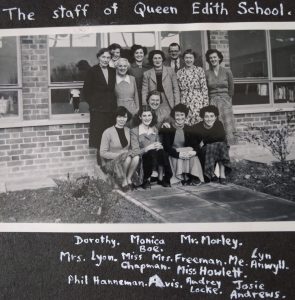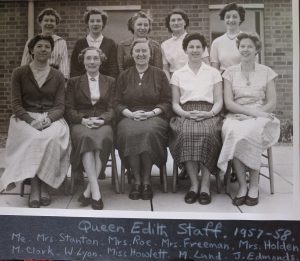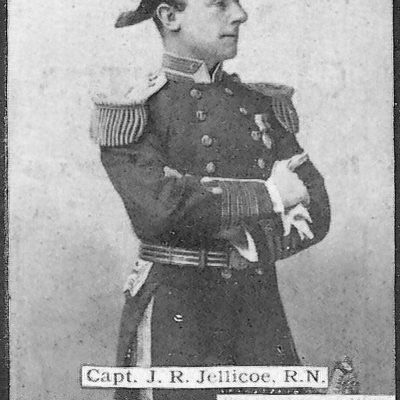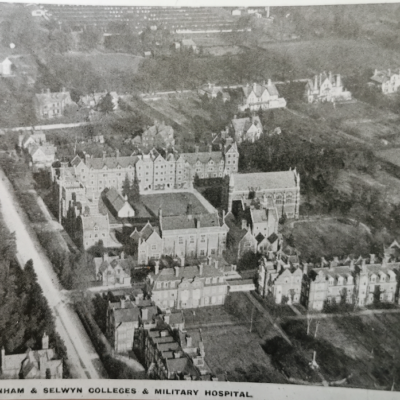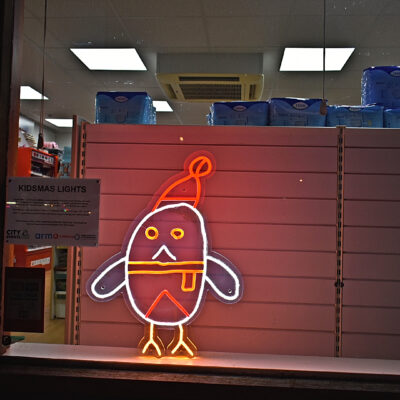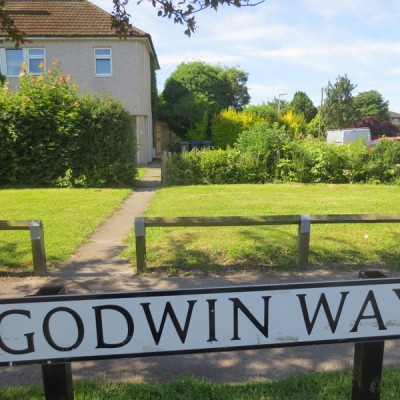Search by topic
- archaeology
- architecture
- bricklayer
- Building of Local Interest
- carpenter
- church
- crime
- dressmaker
- fire
- general labourer
- Great Eastern Railway
- listed building
- medieval
- oral history
- Public House
- Rattee & Kett
- Roman
- scholar
- school
- Then and Now
- tudor
- women
- work
- world war one
- world war two
Search by text
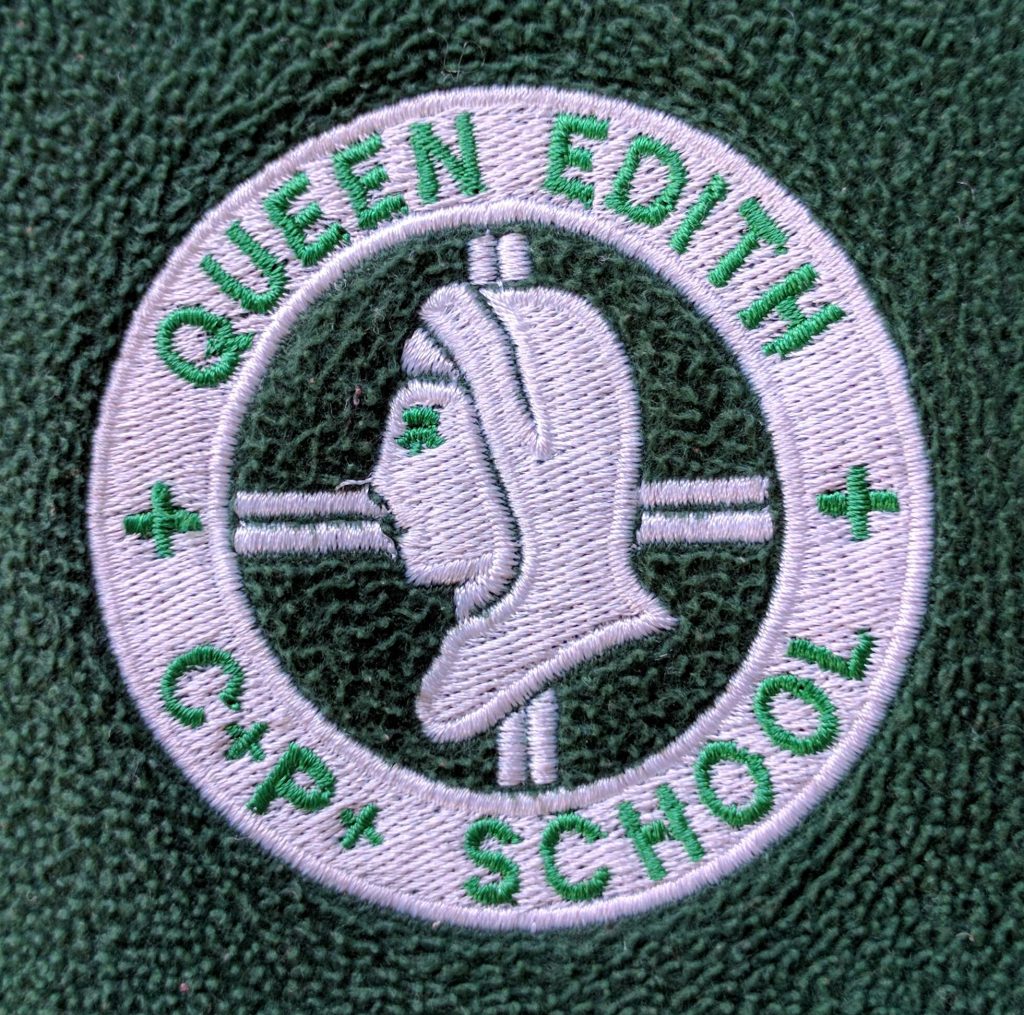 Queen Edith School old logo
Queen Edith School old logoQueen Edith’s School
Historical notes on Queen Edith's School
Queen Edith School – history
Infant and Junior teachers with Miss Howlett, headmistress.
Infant teachers with Miss Howlett, headmistress and Mrs Freeman, school secretary.
Margaret Rishbeth was a teacher at Queen Edith’s Infant School when it first opened in the summer of 1953. Miss Howlett, the headmistress of Morley Memorial School was headteacher of the new school as well initially. Margaret stayed for three years, spend two years in Canada and then returned for another three years at Queen Edith’s. In 2016 she talked about her time at the school:
The Cambridge Weekly News noted in March 1982 that when the children of the school saw the flats for old people being built at Wulfstan Court in 1973 they asked their headmistress, Miss K M Johnson, what they could do for their neighbours. “They decided to buy the old people a seat”, said Miss Johnson. “Each child did a special ‘helping mother’ job to raise the money.” The article goes on to describe the high point of the year for the old people. At Easter the children from Queen Edith’s deliver a half dozen fresh eggs. No one is missed. “It’s a lovely present” said Mrs Amy Gillbrook, then 82. She and her husband Walter were among the first people to move into Wulfstan Court which was built on a field that was used for Alan Cobham’s Flying Circus.
The following is a link to video of the Flying Circus in the 1930s.
Past pupils
Olivia Newton-John b. 1948. Olivia was a pupil at the then, in 1953, new Queen Edith infants school for a term when she was four. Her grandfather father was the famous German Jewish physicist Max Born who had fled Germany in 1933 and come to Cambridge where he worked at St John’s College for a short time. It was here that his daughter met Olivia’s father.
Brinley Newton-John had graduated from Cambridge in 1935 with a double first in modern and medieval languages. He was commissioned into the RAF in WWII and was particularly involved in the interviewing of captured German pilots. In 1942 he was seconded to Bletchley Park.
In 1946 he was appointed Headmaster of the Cambridgeshire County High School for Boys. The family probably attended the Wesleyan Methodist Chapel in Hills Road. In 1954 the family left for Australia when Brinley was appointed master of Ormond College, University of Melbourne.
In 2024 SC sent us this account of her time at the school: I was a student at Queen Ediths School in 1968-69 when my father was on sabbatical at Cambridge from the University of California Davis. I have fond memories of the school, except for interactions with the then Headmaster, Mr Harwood. Mr Harwood believed strongly in the use of corporal punishment, which was quite a shock for me and my American friends. I had never been hit by a teacher before or after my year at Queen Ediths. There were a handful of children of American professors attending that year and we were generally terrified of him. We did everything possible to stay out of his way. The rest of the teachers were friendly and I excelled academically at the school. When I returned home to California I was a year ahead of my peers in Maths. I played on the school rounders team and participated in a track and field day. My little sister and I were in the Yellow House. (The students were divided into houses – Yellow, Red, Blue and Green – for friendly competitions.) I sang in the choir, swam in the freezing pool once a week. I won first place in the Swim Day Freestyle race.
Contribute
Do you have any information about the people or places in this article? If so, then please let us know using the Contact page or by emailing capturingcambridge@
License
 This work is licensed under a Creative Commons Attribution-NonCommercial-ShareAlike 4.0 International License.
This work is licensed under a Creative Commons Attribution-NonCommercial-ShareAlike 4.0 International License.








